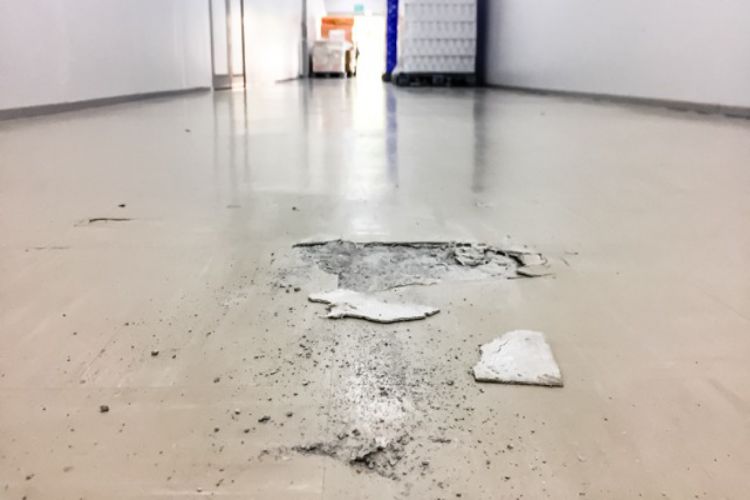Concrete is usually thought of as “eternal”, yet even this material gradually degrades under natural and technical loads. In production shops and garages, the slab is constantly pressed by equipment weight; vehicle wheels add dynamic stress, while moisture and chemicals seep into micro-cracks and start rebar corrosion. Repairs are required not when deep cracks appear but long before—otherwise isolated spots turn into a systemic problem.
“Enemies” of a Concrete Floor
Even with its high strength, concrete can be destroyed by external influences. Specialists single out several key factors that can inflict serious damage:
- Mechanical abrasion. Forklift wheels, pallets, and even sand on shoes grind down the top layer.
- Temperature swings. Frozen water expands pores, and sharp changes between a heated room and a cold floor create internal stress.
- Chemical agents. Oils, salts, and acids eat away at the cement stone, making it brittle.
- Shrinkage and vibration. Uneven drying or heavy pressing creates micro-cracks across the entire surface.
Even if defects look “cosmetic,” they generate dust and reduce adhesion for lacquers, paints, or epoxy toppings. The later you intervene, the thicker the layer you’ll have to mill off—or re-pour completely.
When Is the Right Time to Repair Concrete?
While damage is minor, restoration is limited to locally filling cracks or lightly grinding the surface. Once deep cavities appear and rebar is exposed, high-strength repair mortars—and sometimes cutting out sections of the slab—are required. Costs rise exponentially because you must factor in equipment removal, production downtime and material logistics.
Consequences of Delaying Repairs
As with any maintenance, it’s best to fix concrete when the problem is still small. The longer you postpone, the more you’ll pay. Quality concrete repair can always be ordered from Speedway, a company that specializes in such work and guarantees results. Besides financial costs, specialists note other negative effects of untimely repairs:
- Higher injury risk. Chips and uneven areas endanger staff and destroy the equipment wheels.
- Loss of energy efficiency. Cracks let ground moisture and cold in, raising heating or cooling costs.
- Poor sanitary conditions. Voids collect dust, bacteria and moisture, accelerating rebar corrosion and mold growth.
- Reduced building lifespan. Failure to fix local defects in time can impair the slab’s load-bearing capacity.
Regular technical inspections help catch the moment when restoration can still be done with thin-layer compounds and minimal tools. A scheduled audit once a year—and immediately after emergencies—is the best guarantee of budget savings and stable operations. In warehouses where forklifts move constantly, it’s wise to strengthen the top layer with polymer sealers right after initial grinding: this postpones major repairs for several seasons and reduces dust formation.

